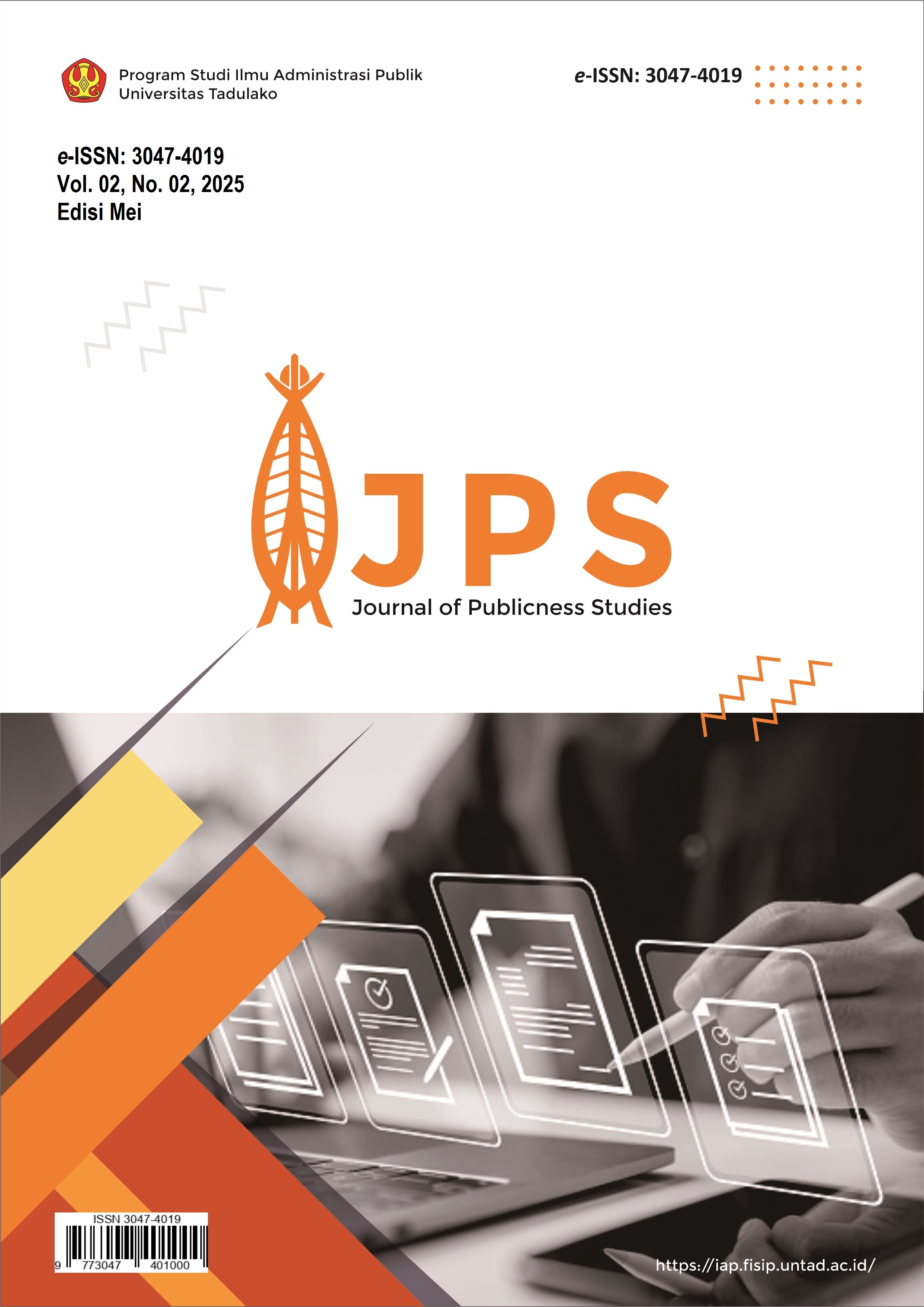Inovasi Pelayanan Publik Dalam Penerapan e-Government di Polresta Palu: Studi Kasus Aplikasi Sinar (SIM Nasional Presisi)
plugins.themes.academic_pro.article.main6956fb63d4421
Abstrak
Penelitian ini bertujuan untuk mengetahui inovasi pelayanan publik dalam penerapan e-government di Polresta Palu pada Aplikasi SINAR (SIM Nasional Presisi), dengan menggunakan teori "Diffusion of Innovations" yang dikemukakan oleh Everett Rogers (2003) yang terdiri dari 5 aspek, yaitu Keuntungan Relatif, Kesesuaian, Kerumitan, Uji Coba, dan Pengamatan. Dasar penelitian ini adalah penelitian kualitatif dengan tipe penelitian deskriptif dengan pendekatan kualitatif. Teknik pengumpulan data yang digunakan adalah observasi, wawancara, dan dokumentasi dengan mengambil informan sebanyak 6 orang. Hasil penelitian ini menunjukkan bahwa aplikasi SINAR merupakan inovasi yang cukup baik dalam pelayanan publik dan penerapan e-government di Polresta Palu. Namun, aplikasi ini belum sepenuhnya efektif karena hanya fitur perpanjangan SIM yang dapat digunakan, sementara fitur lainnya masih belum berfungsi. Aplikasi ini masih membutuhkan beberapa perbaikan untuk mengatasi hambatan yang ada, serta meningkatkan publikasi untuk meningkatkan adopsi SINAR di kalangan masyarakat. Dalam aspek Kerumitan (Complexity), beberapa data yang membuat masyarakat kebingungan, serta masalah pada jaringan. Aspek Pengamatan (Observability) juga perlu diperbaiki, karena penulis mengamati kurangnya publikasi yang efektif, sehingga masih banyak masyarakat belum mengetahui dan menggunakan aplikasi ini. Beberapa saran dari pengguna SINAR juga perlu dipertimbangkan untuk meningkatkan kualitas layanan.

